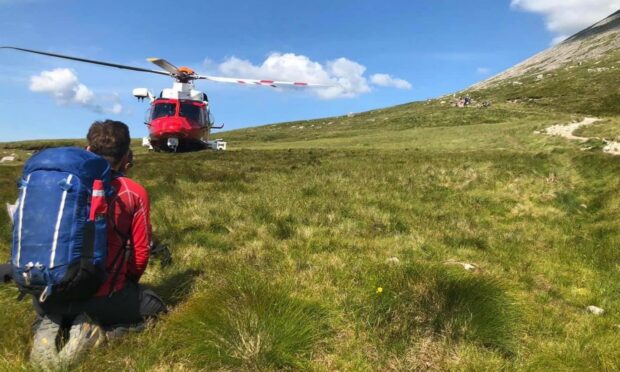If you are in trouble in Scotland’s mountains you should dial 999. That’s the long and the short of it.
A social media post has been doing the rounds recently, advising people that if they find themselves lost or stranded with low battery or no phone signal, they should change their voicemail message to give their approximate position and circumstances. The idea is that anyone who calls them will receive this information, even once battery or signal are totally lost.
It’s nonsense, of course. Because your voicemail message is stored on the phone company’s servers, you need a signal to change it. And, if you have limited battery left, for goodness’ sake don’t waste it on something which will only work – maybe – if someone happens to call you.
What to do if you get in trouble on Scotland’s mountains
If you are in an emergency situation, the most important thing to do is not to waste any remaining battery power, but to dial 999, ask for police, and then for mountain rescue. A 999 call will get through on any network, even if your own is not available.
If the signal is poor, it may still be enough to allow you to send a text message to 999, with your position and brief details of the problem. Although you have to pre-register your phone to be able to do this, it’s quick and easy to do.
You can also find out your exact location using the free OS Locate app, which gives your position in the tried and tested format used by mountain rescue teams. In fact, this is the procedure Scottish Mountain Rescue – the umbrella organisation for Scottish mountain rescue teams – asks people to follow. To do otherwise would be foolish.
Heading outside this week? Why not check out the OS Locate app, designed to help prevent walkers from getting lost in bad weather 👉https://t.co/tGKZvhxfDq #StormDennis pic.twitter.com/oKwXrtxLDh
— OS Leisure (@OSleisure) February 12, 2020
Some people have argued that, before setting off on a trip to the hills, walkers could change their voicemail to give a rough route and estimated time of return, so that anyone calling them will have that information.
However, that, again, requires someone to just happen to call you, and could also lead to false alarms. Far better to leave a route description with someone you trust so that they can take immediate action if you don’t return when expected.
You can find out more about calling Mountain Rescue and how to register your phone for 999 texts on the Mountaineering Scotland website.
Heather Morning is mountain safety adviser for Mountaineering Scotland
